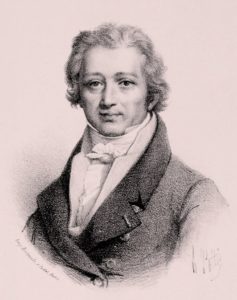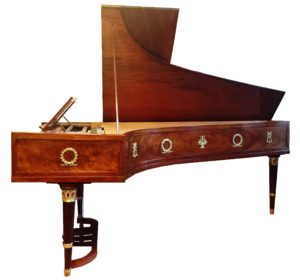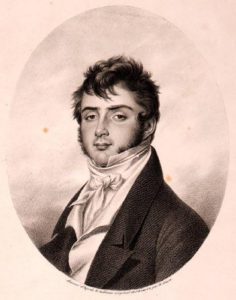The Piano Company of Sébastien Érard

Towards the end of the 18th and the beginning of the 19th century there were three major centres of piano making: Vienna, London and Paris. One of the Parisian companies that brought it to world fame was the workshop of Sébastien Érard. Instruments from his workshop gained international fame and were appreciated by musicians and composers.
Sébastien Érard was born on April 5, 1752 in Strasbourg and was one of the most important piano makers in the late 18th and 19th centuries. Besides Taskin and Mercken he built the first pianos in France.
His father worked as cabinet-maker and in 1768 he was an apprentice by various harpsichord makers in Paris (unfortunately it is not known who he was apprenticed to). From 1770 on he had his own workshop in Rue de Bourbon. In addition to pianos he also built harps.
In 1781 he moved with his workshop in No. 13/21 Rue du Mail. His brother Jean-Baptiste (1750 – 1826) joined the same year from Alsace and supported the work and lent him money. On February 5, 1785 Sébastien received the official license for the construction of instruments. Together with his brother in 1788 an official partnership was found and the two brothers expanded their business in 1792 to London. The address was No. 18 Great Marlborough Street.
After the end of the French Revolution and the expansion of the branch in London he returned to Paris in 1796.
According to old business documents the first grand piano was built in 1796. In 1803 the company donated Ludwig van Beethoven a grand piano. Beethoven’s piano with the serial number 133 is identical to the Érard grand piano of 1802 (serial number 107) in the Eric Feller Early Keyboard Collection. Beethoven left the instrument to his brother Nikolaus Johann in 1824/1825. After that in 1845 the instrument finally came into the collection of the Oberösterreichisches Landesmuseums in Linz.

Erard 1802 – Hammerflügel – Piano en forme de clavecin – Eric Feller Collection
Early grand pianos by Érard are characterized by an excellent sound, light play and a highly elegant workmanship. The customer had the opportunity to choose from different bronzes for decoration of the case when ordering.
In 1808 Sébastien Érard first patented a repetition action and agraffes. In the years 1808 – 1814 Sébastien lived in England, while his brother Jean Baptiste continued the company in France, which went bankrupt in 1813. However, with payments from the London branch, the claims could be settled and the business continued.

Pierre Érard – Portrait um 1820 – Eric Feller Collection
In 1814 Jean Baptiste Pierre Orphée Érard (1794 – 1855), Sébastien’s nephew went to London. He led the company with great success so that Sébastien could return to France. After the death of his brother Jean-Baptiste in 1826 Pierre became a partner in the company. In 1822 the first pianos with a compass of 7 octaves were built. These instruments were reinforced with different metal bars. In the same year, Pierre Érard patented (patent number: 2170) a “Compensator Frame” grand piano, which were made on the basis of the instruments by William Allen and James Thom at William Stodart in London. Through the London office Pierre came into contact with these modern instruments which were patented in England two years earlier in 1820. Since the patent had already been issued in England he made an almost identical patent under his name in France. An example of the British “Compensator Frame” instruments by William Stodart can be found here.
Various patents and developments of Érard contributed to the great success of the company. For example, the invention of the double repetition action 1821 (patent number: 4631) which is still used today in instruments.
The company quickly became one of the leading piano manufactures. For example Franz Liszt (1811 – 1886) preferred Érard instruments in his concerts.
On 5 August 1831 Sébastien Érard died in La Muette near Passy. The company was then continued by his nephew Pierre with great success.
After the death of Pierre on 16 August 1855 the company was continued by his wife Camille Février and her stepbrother M. Schaeffer in France. The London Branch was headed by M. Bruzaud. In August 1873 Amédée Blondel became a partner of Camille Érard and director of the company in Paris.
In the 1960s, Érard merged with Gaveau, Boisselot and Pleyel and was then bought by the Braunschweig piano company Schimmel. In the 1990s the company was bought back by some private investors and the production of pianos was continued until the closure of the company in 2013.
Sources:
- Harding R.E.M .: The Pianoforte – its history traced to the Great Industrial Exhibition of 1851 (Gresham Books 1978)
- Bloom, P .: Music in Paris in the 1830’s. New York, Pendragon press 1987
- Brancour, R .: Histoire des instruments de musique. Paris, Henri Laurens 1921
- Burnett, R .: Company of pianos. Finchcock’s Press, 2004
- Emmanuel, A .: La harpe, son évolution, ses facteurs. Paris, Dessain et Tolra. 1980
- Getreau, F .: Les collections instrumental du Conservatoire de Paris. 1793-1993. Paris, Editions Klincksieck. 1996
- Melville, D .: Beethoven’s pianos: The Beethoven Companion. London, Faber and Faber. 1971
- Adelson R., Roudier A., Nex J., Barthel L., Foussard M .: The History of the Erard Piano and Harp in Letters and Documents, 1785-1959, Cambridge 2015
© Eric Feller – Early Keyboard Collection – April 2018

